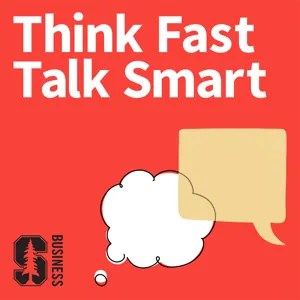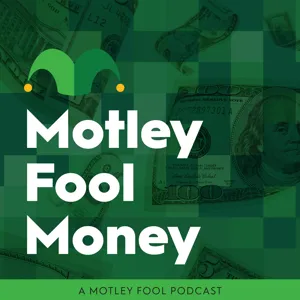129. Connect Deeply: How to Communicate So People Feel Seen and Heard

New York Times Opinion columnist David Brooks shares how to communicate so that others feel seen, heard, and understood.
All too often, we communicate without really connecting. The key to building deep connections with others, says David Brooks, is to make them feel seen and heard.
Brooks is a writer for the New York Times, the Atlantic, and the best-selling author of several books. In his latest, How to Know a Person: The Art of Seeing Others Deeply and Being Deeply Seen, he explores how vulnerability — both being vulnerable ourselves and creating space for others to be as well — is the key to fostering deeper connections at home, at work, and throughout our lives. “[People] need to be seen, heard, and understood,” he says. “If you hide yourself from the emotional intimacies of life, you're hiding yourself from life itself.”
In this episode of Think Fast, Talk Smart, Brooks and host Matt Abrahams discuss the fundamentals of communicating with vulnerability and empathy, outlining the skills that anyone can learn and use to connect more deeply in their relationships.
Episode Reference Links:
- Full list of David Brooks books
- Bryan Stevenson
- George Orwell
- C.S. Lewis
- Oprah Winfrey Video
- Ep 64, Carissa Carter: YouTube / Website
- Ep 101, Geoffrey Cohen: YouTube / Website
Connect:
- Email Questions & Feedback >>> thinkfast@stanford.edu
- Episode Transcripts >>> Think Fast Talk Smart Website
- Newsletter Signup + English Language Learning >>> FasterSmarter.io
- Think Fast Talk Smart >>> LinkedIn Page, Instagram, YouTube
- Matt Abrahams >>> LinkedIn
- Stanford GSB >>> LinkedIn & Twitter
Chapters:
(00:00:00) Introduction
(00:01:26) Personal Motivation
David Brooks shares insights into his journey and the motivation behind his latest book.
(00:04:01) Barriers to Connection
Common barriers to connection including egotism, anxiety, worldview, and lack of questioning.
(00:04:43) The Stages of Empathy
David Brooks breaks down empathy into components such as mirroring, mentalizing, and caring, and recognizing your own emotion
(00:07:40) Keys to Meaningful Conversation
Attention as an on-off switch, loud listening, avoiding topping responses, embracing pauses, and making people authors
(00:11:22) Understanding Illuminators and Diminishers
Illuminators are those who make you feel seen and valued through curiosity and active listening and suggestions and suggestions on how to be a better illuminator and conversationalist.
(00:14:01) How to Be a Better Public Speaker
The importance of vulnerability, humor, and storytelling.
(00:16:25) Paradigmatic vs. Narrative Modes of Thinking
Jerome Bruner's concept of paradigmatic for writing and convincing, Narrative mode for understanding a fellow human being.
(00:18:02) David Brooks' Journey
Becoming a journalist, inspired by childhood reading and early experiences as a police reporter & admiration for Oprah Winfrey as an admirable listener.
(00:19:52) Ingredients for Successful Communication
David Brooks outlines his three essential ingredients for effective communication: depth of passion, vulnerability, and clarity.
(00:22:27) Closing
See Privacy Policy at https://art19.com/privacy and California Privacy Notice at https://art19.com/privacy#do-not-sell-my-info.
